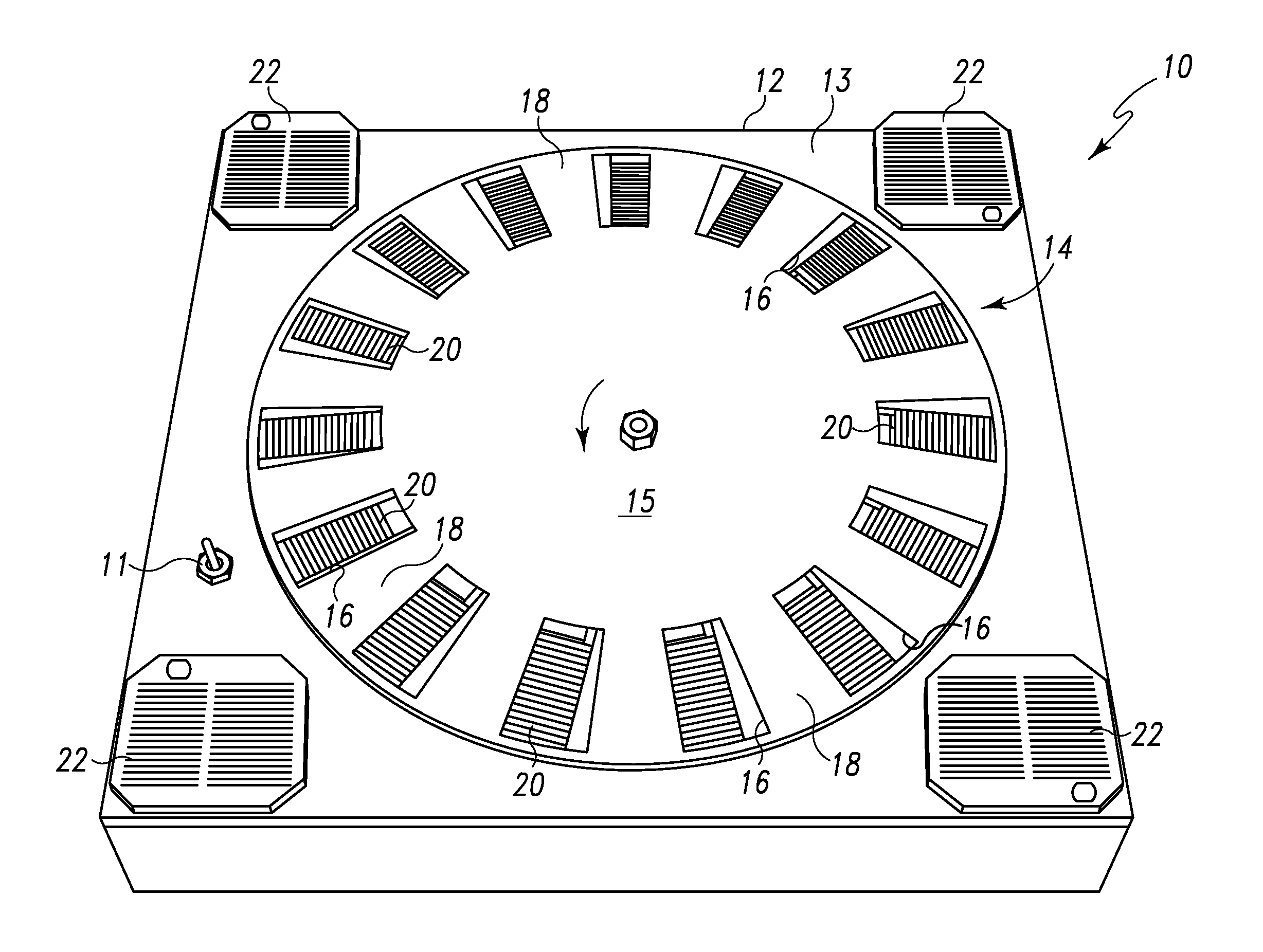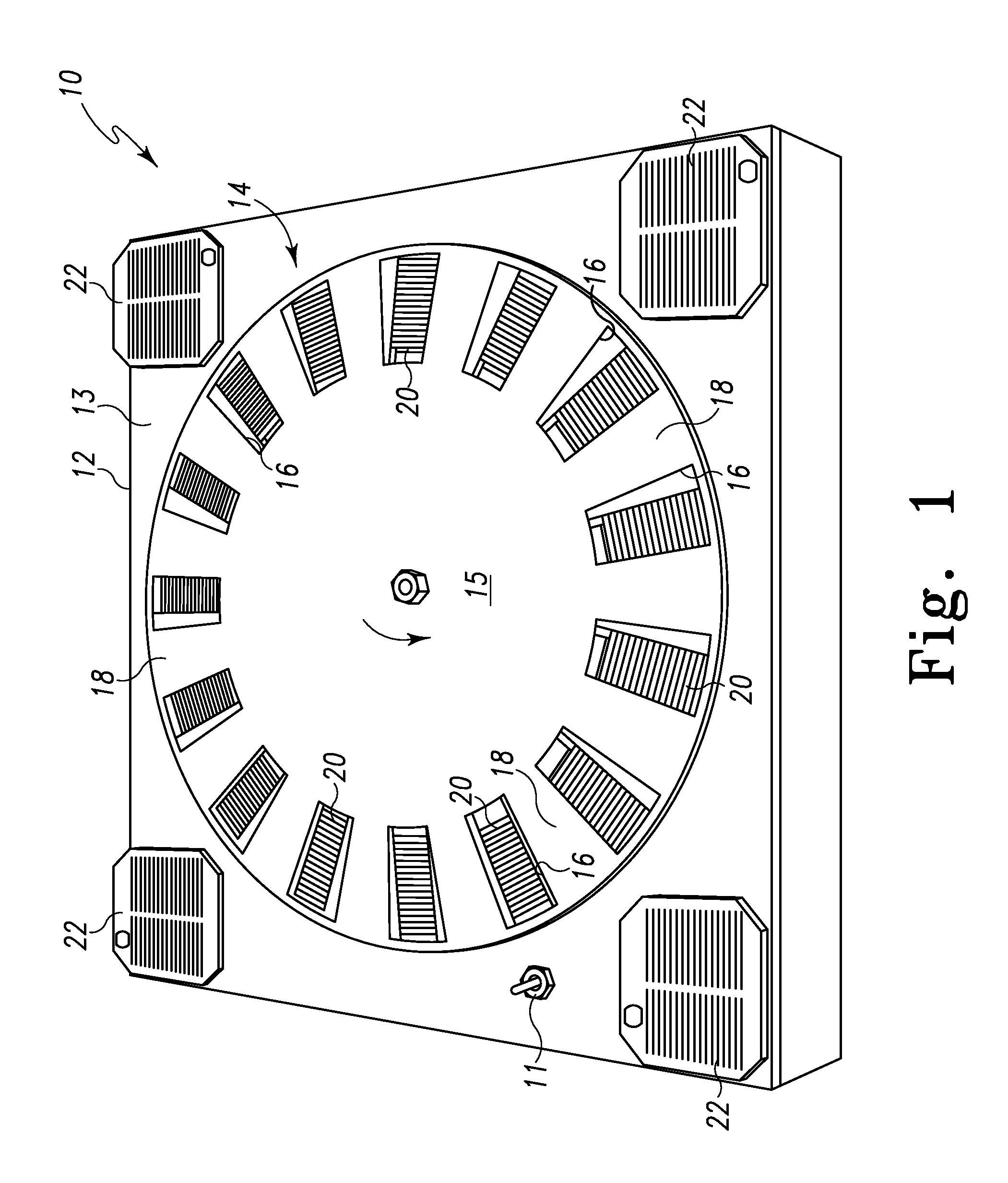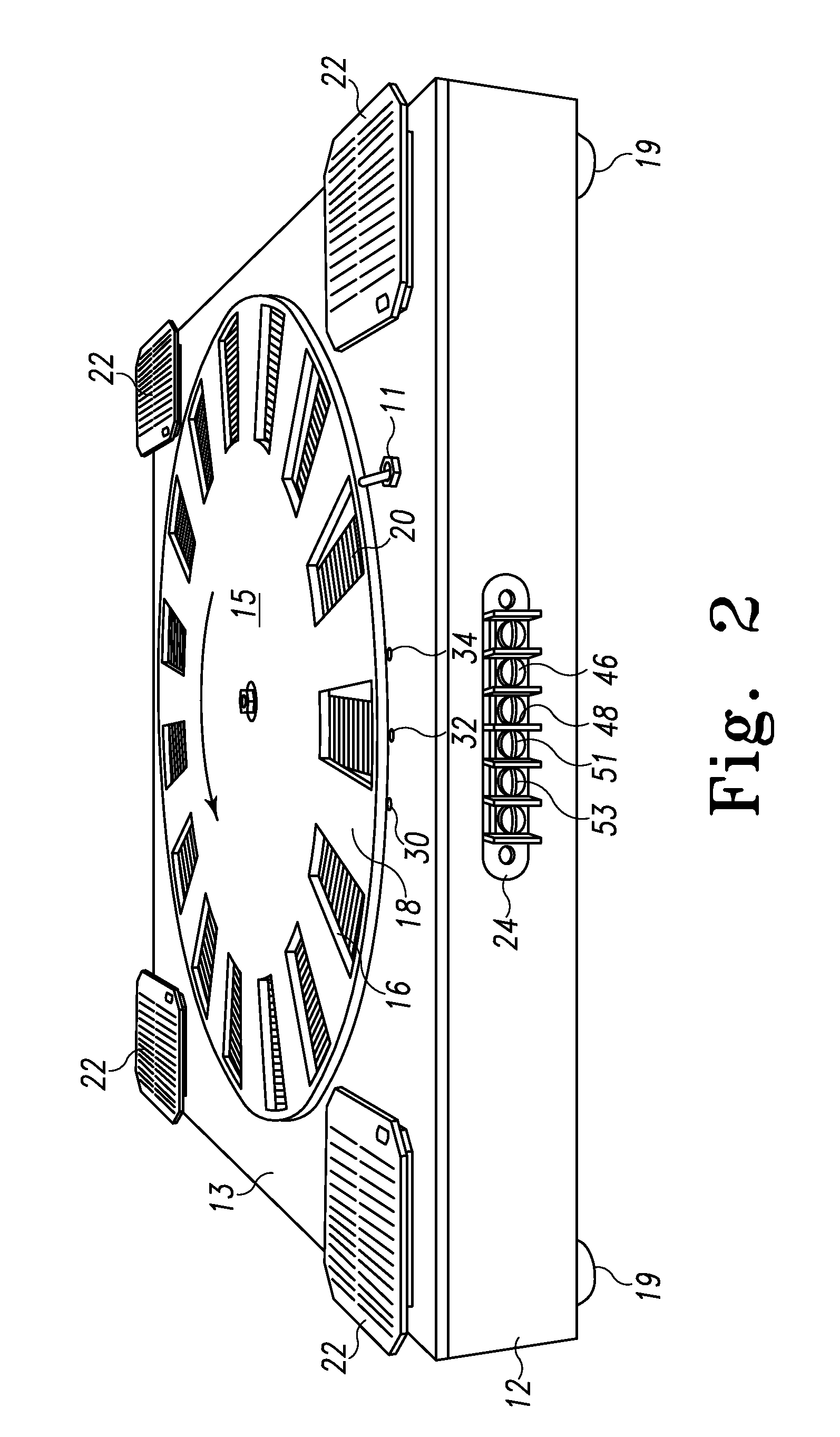Device, system and method for directly generating alternating current electricity from photovoltaic cells
a photovoltaic cell and alternating current technology, applied in the field of photovoltaics, can solve the problems of nuclear energy for the creation of electricity, the drawback of nuclear waste, and the inability to produce electricity, etc., and achieve the effects of convenient operation, cost-effectiveness and convenient power generation
- Summary
- Abstract
- Description
- Claims
- Application Information
AI Technical Summary
Benefits of technology
Problems solved by technology
Method used
Image
Examples
Embodiment Construction
[0037]Referring to FIGS. 1-5, there is depicted various views of an exemplary embodiment of a photovoltaic alternating current (a / c) electricity generator, generally designated 10, fashioned in accordance with the present principles. The photovoltaic a / c generator 10 is embodied as a solar cell a / c electricity generator 10, but it should be appreciated that a photovoltaic a / c electricity generator fashioned in accordance with the present principles may use photovoltaic cells other than solar cells.
[0038]The solar cell a / c electricity generator 10 has a base, frame or other mounting structure 12 (“base 12”) that supports the various components thereof. The base 12 may be formed of wood, plastic or other suitable material which is preferably, but not necessarily, a non conducting material. It should be understood that while the base 12 is shown as a box or a box-like structure, the base may be a substrate, board or other suitable mounting or supporting structure. The base 12 includes ...
PUM
 Login to View More
Login to View More Abstract
Description
Claims
Application Information
 Login to View More
Login to View More - R&D
- Intellectual Property
- Life Sciences
- Materials
- Tech Scout
- Unparalleled Data Quality
- Higher Quality Content
- 60% Fewer Hallucinations
Browse by: Latest US Patents, China's latest patents, Technical Efficacy Thesaurus, Application Domain, Technology Topic, Popular Technical Reports.
© 2025 PatSnap. All rights reserved.Legal|Privacy policy|Modern Slavery Act Transparency Statement|Sitemap|About US| Contact US: help@patsnap.com



